The Tibetan Buddhist Reincarnation System and China's Political Weaponization
Chinese emperors, especially those of the Manchu-led Qing Dynasty, recognized that control over Tibetan Buddhism offered a powerful form of soft power. By leveraging religious authority, they could exert indirect political influence over Buddhist populations beyond China's borders.
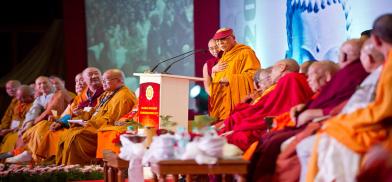
Although there are immense numbers of individual tulkus in Tibetan Buddhist tradition, it's important to understand why the People’s Republic of China (PRC) has taking a special interest in the reincarnation of His Holiness the 14th Dalai Lama. If we look at historical records, it becomes clear that the Tibetan tulku system was developed primarily to preserve the rich cultural heritage and ensure the transmission of the profound teachings of Buddha Shakyamuni. The system allowed spiritual lineages to continue across generations, maintaining both religious continuity and institutional stability.
For centuries, Tibetan Buddhism has been a major spiritual force across Central Asia, the Himalayas, Mongolia, and parts of Southeast Asia, particularly in regions such as Bhutan, Laos, and northern Myanmar. Chinese emperors, especially those of the Manchu-led Qing Dynasty, recognized that control over Tibetan Buddhism offered a powerful form of soft power. By leveraging religious authority, they could exert indirect political influence over Buddhist populations beyond China's borders.
In modern times, this dynamic has evolved into the political weaponization of the Dalai Lama’s reincarnation. The Chinese government asserts that it alone holds the authority to recognize the 15th Dalai Lama, using the Golden Urn system originally mandated in 1793 as a justification for this claim, in the latest news circulated in Tibet. China says the central government has the right to make the final decision on the Dalai Lama's reincarnation.
However, on July 2, 2025, during the 15th Tibetan Religious Conference organized by the Department of Religion and Culture of the Central Tibetan Administration (CTA), His Holiness the 14th Dalai Lama reaffirmed that only the Gaden Phodrang institution, which holds his personal and spiritual legacy, holds the legitimate authority to determine the recognition of his successor. [1]This declaration affirmed that the reincarnation of the 14th Dalai Lama will be born in a free country and it follows "the Tibetan Buddhist traditions and the reliable oath-bound Dharma Protectors who are linked inseparably to the lineage of the Dalai Lamas. They should accordingly carry out the procedures of search and recognition in accordance with past tradition."
Reincarnation Traditions, Spiritual Masters
In the Buddhist world, the concept of recognizing reincarnate lama took a distinct and formalized shape within Tibetan Buddhism. Upon the death of a revered spiritual leader, their reincarnation is sought through meditation, visions, and auspicious signs. The identified child is then invited to resume the training and responsibilities of their predecessor, often within the same religious institution. These origins of recognizing reincarnated spiritual masters in Tibet are well-documented and culturally significant.
The Tibetan tulku system began in the 13th century with the Karmapa lineage. It was in 1288 that the great yogi Orgyenpa (1230–1309) recognized a four-year-old boy as the reincarnation of his teacher, Karma Pakshi (1204–1283). That child became the third Karmapa, Rangjung Dorje (1284–1339), whose lineage can be traced back to Dusum Khyenpa (1110–1193), the first Karmapa. This recognition marked a turning point in Tibetan history. Rangjung Dorje is remembered not only as one of the greatest Karmapas but also as a distinguished meditator, visionary, and scholar.
Unlike his predecessors, the third Karmapa was noted for making self-referential claims of being a reincarnate lama at a young age. While some of these accounts may be later attributions, they laid the groundwork for a revolutionary concept of recognized spiritual succession. By tracing the tulku tradition to its roots in the Karmapa lineage and linking it with the heritage of India’s ancient Nalanda wisdom, Tibetan reincarnation practices are placed within a broader cultural and philosophical continuum. This framing highlights Tibetan Buddhism’s unique spiritual identity while emphasizing the importance of preserving knowledge and tradition amid political and social upheaval. [3]
Tulku System and Tibetan Cultural Preservation
The Tibetan tulku system evolved beyond religious practice to become a powerful tool of cultural preservation. Spiritual figures such as His Holiness the 14th Dalai Lama have used their esteemed positions to promote education, document Tibetan history, and safeguard cultural identity both within Tibet and in exile. In the latest autobiography, "Voice for the Voiceless", the Dalai Lama recounts his seventy-five-year-long nonviolent struggle against China to protect Tibet and its people. The book outlines his tireless efforts to preserve the Tibetan language, philosophy, arts, religion, and environment, even in the face of extraordinary challenges. His dedication to compassion, dialogue, and justice has made him a global symbol of peace and a voice for those who cannot speak freely. [4]
Dalai Lama and Monastic Institutions
The Dalai Lama’s mission, along with that of many other tulkus, has ensured the continuity of Tibetan Buddhist thought and identity far beyond the traditional borders of Tibet. Their lives of study, practice, and teaching have helped Tibetan Buddhism flourish, even amid political displacement.
Monastic education emerged as a cornerstone of this cultural and spiritual legacy. Monasteries in the Tibetan cultural world, much like ancient Nalanda, became custodians of Buddhist learning and practice, preserving the Dharma when it vanished from much of India after the destruction of Nalanda in the 12th century. Through reincarnated masters, the wisdom of Nalanda lived on in Tibet, Bhutan, Nepal, and Mongolia.
The Tibetan tulku system and monastic education thus serve as twin pillars of Tibetan Buddhist culture. Beyond metaphysical belief, reincarnation in Tibetan Buddhism functions as a practical institution for maintaining leadership, scholarship, and continuity. In a religious tradition where impermanence is a central truth, the reincarnation of the Tibetan tulku system introduces a paradoxical continuity, making the impermanent stable and the mortal perennial.
Tibetan Buddhism has remained vibrant largely due to the enduring efforts of its reincarnated masters and monastic institutions. The reincarnation of the Tibetan tulku system provides not only a means of spiritual succession but also a structure for cultural and intellectual continuity. As such, it stands as one of Tibetan Buddhism’s most significant contributions to world spiritual and cultural heritage, a bridge between the timeless wisdom of the past and the evolving needs of the present. Therefore, such system is not only significant for the Tibetan people but millions of followers of Tibetan Buddhism worldwide. Hence, it is imperative that the international community must come forward and protect the right to believe of this significant population.
[1] Gaden Phodrang official website.2nd July 2025.
[2] Kontrul Lodro, Jamgon,'' Enthronement, ''the recognition of the reincarnated masters of Tibet and the Himalayas. Translated and introduced by Ngawang Zangpo. Snowline Publication, Ithaca, 1997.pp. pp. 11-19.
[3] Wylie (Seattle), Turrell V," Reincarnation: A political innovation in Tibetan Buddhism in Proceedings of the Csoma De Koros Memorial Symposium Held at Matrafured, Hungary, edited by Louis Ligeti, Published by Akadémiai Kiadó, Budapest 1978.p.579.
[4] Voice for the voiceless, over seven decades of struggle with China for my land and my people by His Holiness The Dalai Lama, published by Harper Collins, 2025.
(The author is a Research Fellow at Tibet Policy Institute, Dharamshala, India. Views expressed are personal. He can be contacted at tseringdolma@tibetpolicy.net)
Personal Spiritual Reincarnation recorded in China
Spiritual [ 1st known Buddha Tonpa Shenrab Miwo. Never promote or implement any “religion" or Cult.
International Information May Be Seen Below.
Never receives or charges any money, credit card payment, money gram, bank transfers [ etc. ] In any form.
True Old Bon always. Non-Political, Non-Religious, Strictly Spiritual. We respect all political, philosophical, human, and faith beliefs.
https://okm222okm.tumblr.com/




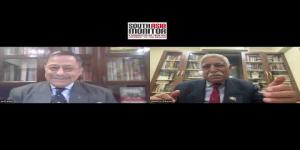
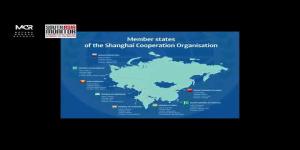

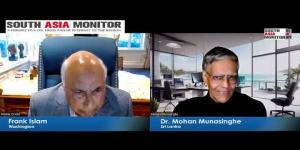
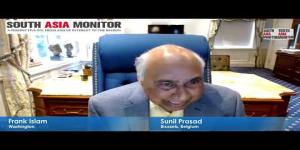
Post a Comment